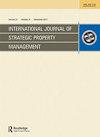中国小学资源的城乡差异——以运城县为例
IF 2
4区 管理学
Q3 MANAGEMENT
International Journal of Strategic Property Management
Pub Date : 2023-06-05
DOI:10.3846/ijspm.2023.19142
引用次数: 0
摘要
小学资源可分为校园资源、教学资源和社区资源三种类型。人口迁移和居民对优质学校的偏好引发了中国县域学校资源的城乡差异,这是在快速城市化背景下出现的普遍现象。尽管这些资源差异对社会可持续性产生负面影响,并且越来越需要综合分析学校资源的城乡差异,但迄今为止还没有一个有效的分析框架来解决这些问题。为了弥补这一研究空白,本研究开发了一种基于熵的TOPSIS (Order Preference by Similarity To Ideal Solution)、空间分析和统计分析的方法,通过资源的相对邻近性来评估小学资源公平。本文以运城县为例,对城乡小学资源差异进行了定量研究。根据地理位置发现并呈现三种资源的城乡差异。研究结果对理解学校资源分配不均衡、促进教育公平、提高县域社会可持续性具有重要意义。此外,分析框架有可能扩展到分析中学或高中的城乡资源差异。本文章由计算机程序翻译,如有差异,请以英文原文为准。
URBAN–RURAL DIFFERENCES IN PRIMARY SCHOOL RESOURCES IN CHINA: A CASE STUDY OF YUNCHENG COUNTY
Resources in primary schools can be classified into three types: campus, teaching, and community resources. Urban–rural differences in the resources of Chinese county schools, which are triggered by population migration and residents’ preference for high-quality schools, are a common phenomenon emerging in the context of rapid urbanization. Despite the negative effects of these resource differences on social sustainability and the increasing need to comprehensively analyze urban–rural differences in school resources, to date there has not been an effective analytical framework for resolving these issues. To address this research gap, this study develops a method using the entropy-based Technique for Order Preference by Similarity to Ideal Solution (TOPSIS), spatial analysis, and statistical analysis for assessing resource equity in primary schools by means of the relative proximities of resources. The resource differences between urban and rural primary schools are quantitatively investigated through taking Yuncheng County as a case study. The urban–rural differences in the three types of resources are discovered and presented according to geographical location. The research findings make contributions to understanding the unbalanced distribution of school resources, promoting equity in education, and improving the social sustainability of counties. Additionally, the analytical framework has the potential to be extended to analyzing urban–rural resource differences in secondary or high schools.
求助全文
通过发布文献求助,成功后即可免费获取论文全文。
去求助
来源期刊
CiteScore
4.00
自引率
18.50%
发文量
23
审稿时长
15 weeks
期刊介绍:
International Journal of Strategic Property Management is a peer-reviewed, interdisciplinary journal which publishes original research papers. The journal provides a forum for discussion and debate relating to all areas of strategic property management. Topics include, but are not limited to, the following: asset management, facilities management, property policy, budgeting and financial controls, enhancing residential property value, marketing and leasing, risk management, real estate valuation and investment, innovations in residential management, housing finance, sustainability and housing development, applications, etc.

 求助内容:
求助内容: 应助结果提醒方式:
应助结果提醒方式:


